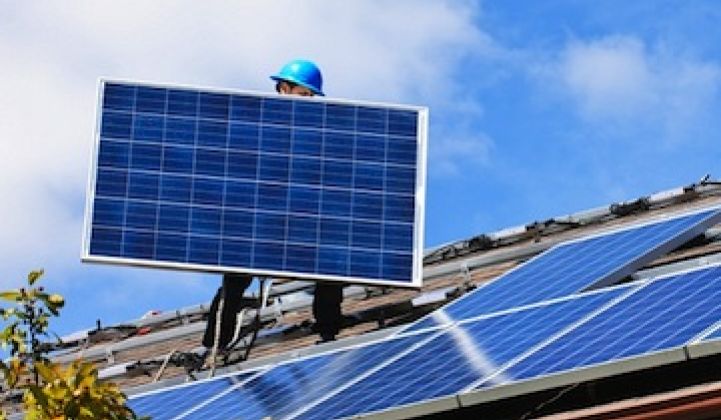Although securitization has been limited in the residential solar sector thus far, most in the industry believe it's an inevitability.
But if more banks are going to package portfolios of solar projects from a wide range of installers and sell them off to investors, they need consistency. And that means setting standards for projects.
Standards designed to enable securitization are coming from a couple of different organizations: TruSolar and the National Renewable Energy Laboratory (NREL).
TruSolar formed a working group in 2012 to develop risk assessment protocols for non-residential projects in order to lower transaction costs and make bundling projects easier. In March 2013, NREL formed the Solar Access to Public Capital (SAPC) working group to create standards for commercial and residential projects in order to spur more securitization. TruSolar uses some of the SAPC criteria for its accreditation process.
Recently, another organization jumped in to help push for better standards: The Solar Quality Initiative.
The Solar Quality Initiative is not a competitor to the organizations already at work on the issue. Rather, the group is working directly with SAPC and rating agencies -- as well as directly with installers -- to raise awareness about the new guidelines.
Collectively, these groups have been cranking out detailed recommendations with hundreds of other stakeholders in the solar industry. This week, they released new standards for installations and project maintenance as a follow-up to SAPC's previous guidelines on leases and power-purchase agreements.
The two new documents offer guidance on contractor qualifications, measuring system performance, choosing mechanical and electrical equipment, and communications protocols.
Matt Golden, a senior advisor with the Institute for Building Technology and Safety, a nonprofit working with SAPC to promote standards through the Solar Quality Initiative, said the process was enabled by deep industry support.
"This isn't regulators telling the industry to do this. This is the industry agreeing that there need to be basic guidelines for how projects are completed," said Golden.
Even before the large working groups were formed, various solar companies were working on their own internal standards. Sunrun has its own quality assurance guidelines for contractors; Clean Power Finance has software to ensure contractors are meeting standards set by third-party solar firms; and Mercatus Solar has software to help investors understand project risk faster. These companies are all actively involved in the umbrella working group formed by SAPC and the Solar Quality Initiative.
The new recommendations are focused on residential installation, where project quality can vary given the broad range of contractors operating in the sector.
"If I’m a rating agency, it can be difficult to know the difference between installers," said Golden. "This is an attempt to make solar more like car loans and ensure there's a basis for quality."
The most important takeaway from the process, said Golden, is that the standards are not being forced on the industry -- they're coming from the industry itself.
"Markets are forcing this. These companies care about quality and their reputation. That’s what’s going to drive this," he said.
Even with all the recent standards work, securitization hasn't taken off yet. But as the guidelines filter through the market, many hope it will stimulate more activity.
You can find the new installation guidelines here and the O&M guidelines here.



